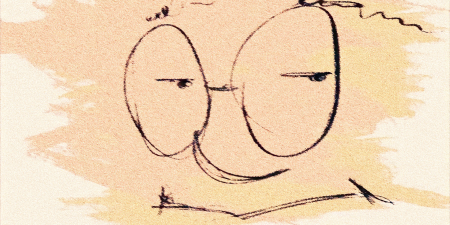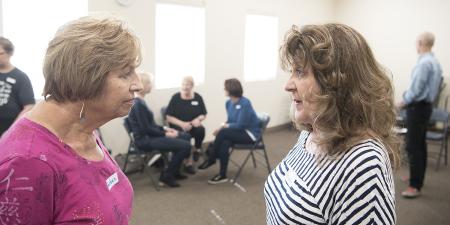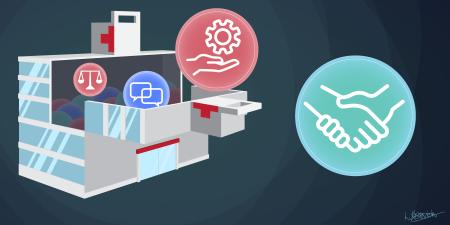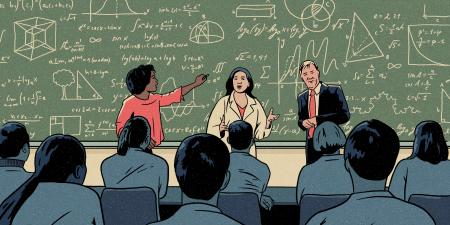Abstract
Milwaukee has become home to one of the largest US populations of Rohingya refugees, who face barriers to health care, including poor service integration impeded by the absence of a formal written language. Clinicians also face barriers to delivering adequate, culturally attuned health services, so suboptimal outcomes are common. This article describes a community-based intervention using an interprofessional, multi-organizational, and ethnographically focused approach to address Rohingya refugee health needs that incorporates Rohingya participants’ making educational videos in their native language. Mutually beneficial outcomes are outlined for Rohingya, students, and clinicians.
Introduction
Milwaukee, Wisconsin, has a strong history of immigrant resettlement dating back to the 1840s with the arrival of German immigrants.1 Almost 180 years later, Milwaukee (and the state) continues to welcome refugees, such as Afghan refugees, and process their resettlement.2 Before reductions in refugee resettlement allotments on a national level between 2016 and 2020,3 more than 700 refugees resettled in Milwaukee, accounting for 70% of Wisconsin’s refugee totals during the federal fiscal year 2017.4 In any given year, Milwaukee’s refugee arrivals come from a range of countries, representing various ethnic groups.5 By the early 2000s, second- and third-wave Hmong families were the predominant group resettling in the Milwaukee area (and central Wisconsin).6 Beginning in 2007, resettlement has been focused on refugees from Burma, to a lesser extent from Somalia and Iraq,7 and most recently from Afghanistan.8
Over the last decade, a large number of Burmese (Myanmar) refugees have settled in the Milwaukee area.9 They are not a homogenous group—most Burmese refugees in Wisconsin are part of the ethnolinguistic group Karen, and there are sizable ethnic minorities of Chin and Rohingya.9 Milwaukee resettled 350 Rohingya in 2019 alone,10 and it has one of the largest populations of Rohingya in the United States, with more than 2000 Rohingya being resettled by 2019.11 Comparably, Chicago had resettled over 1600 Rohingya as of 201912 and Dallas around 300 Rohingya families as of 2021.13 Notably, these estimates do not consider secondary migration, which occurs when a refugee moves to another city within the same country after initial resettlement (Tsering S, Northrup M, oral communication, 2018). Although no reliable numbers regarding secondary migration are known to the authors, anecdotally, the Rohingya population is likely even higher in Milwaukee, given a perceived net positive gain from secondary migration.
Rohingya as an ethnic group are predominantly Muslim in terms of their religion and culture and speak “Rohingya” or “Ruáingga.”14 Their language has been transformed relatively recently into various written scripts—Arabic, Hanifi (a phonetic script based on Arabic letters), and Roman letters.15 The most recent effort began in the 1980s and continues to date, but many older Rohingya are not literate in reading or writing a Rohingya script. Written translation usually occurs through Arabic and, in general, a third language spoken in the country of residency (eg, English).
This article describes a community-based intervention using an interprofessional, multi-organizational, and ethnographically focused approach to address Rohingya refugee health needs that incorporates Rohingya participants’ making educational videos in their native language. Mutually beneficial outcomes are outlined for Rohingya, students, and clinicians.
Providing Health Care
Many members of the growing community of Rohingya, who have settled mostly on the south side of Milwaukee near the Islamic Society of Wisconsin’s main campus and community center, required quality primary and specialty health care upon their arrival.16 Despite their resiliency and eagerness to live and work in Milwaukee, mental health evaluations and trauma-informed care were needed as a result of their forced removal and myriad abuses from the Burmese government as well as their time spent in refugee camps in Bangladesh.17 Additionally, as Rohingya settled into a more routine lifestyle in Milwaukee, chronic conditions, such as hypertension, hyperlipidemia, and diabetes, began to emerge and required evaluation and treatment.18
As prescriptions were written by clinicians, patients began to seek pharmaceuticals and health care information at a local chain of pharmacies that provide translation services. This pharmacy chain is unique in that it delivers health care services through pharmacists and pharmacy technicians who speak over 20 different languages. Languages spoken range from Chinese and Spanish to Arabic and Vietnamese.19 The Rohingya language provided a challenging case of translation, especially for type II diabetes medication management, as several of the newer prescriptions require a more in-depth understanding of medication temperature requirements, dose timing, injections, and dose titration. Rohingya was an entirely new language to the local area (and the pharmacy staff); therefore, educational materials could not be quickly translated.
Interprofessional Response
In order to address the needs of refugee groups, such as Rohingya, Our City of Nations (OCON) was formed. OCON is a collaborative group of health, social, and legal care professionals, advocates, and relocation specialists who came together in 2014 in an attempt to provide what the initial working group and literature described as “culturally attuned healthcare”20 for an increasingly diverse group of refugees in Wisconsin.21 A series of OCON conferences have been held yearly.22 All OCON meetings have included interprofessional breakout sessions for health care students and other graduate students (eg, medical, physician assistant, pharmacy, masters in peacebuilding), averaging over 100 students per session. Two of the coauthors (J.S. and M.O.) are active members of the OCON working group.
In 2019, various barriers and challenges to health care began to come to the attention of local health care practitioners as well as researchers.23 One of the coauthors (J.S.) contacted both clinicians caring for refugees and pharmacy staff in Milwaukee to organize an ad hoc interprofessional working group. The group consisted of physicians, clinic managers, local community pharmacists, and a nurse practitioner. Eventually, 2 Rohingya community members were added to the team, a young man and a young woman, who were employed by the local pharmacy as paid translators. Additionally, one of the coauthors (J.L.), a clinical pharmacist, was recruited to be part of the group because of his interest in training pharmacy students to work with underserved populations as well as his collaborative work in diabetes management.24 A series of meetings were held, attended by pharmacy students as well as working group members, pursuant to a “collaborative action”25 framework. The group wanted to identify gaps in Rohingya care and develop a workflow to address those needs. A key document was produced that created an assembly line of “to-do” items (see Supplementary Appendix Table 1).
Community-based engagements foster both professionalization and interprofessional socialization, pointing students “towards society.”
The local pharmacy and working group began by developing a YouTube channel to post free videos for their Rohingya patients.26 It was determined that a series of educational videos should be completed by and for Rohingya to explain a range of issues. Many things were new to the community, including electronic prescriptions instead of paper prescriptions, as well as the aforementioned complexities of particular medication regimens. Likewise, Rohingya were new to several members of the working group, and it was determined that more knowledge about the community was needed. One of the coauthors (M.O.), a medical anthropologist, advocated for short-term immersion and interviews with Rohingya patients. Time was of the essence because prescriptions were being written and filled daily for Rohingya patients, who were experiencing confusion with a variety of processes, which was negatively impacting their treatment adherence and ultimately their health outcomes.
Focused Ethnography and Health Needs
In general, a window into Rohingya cultural life was needed. A previous collaborative project engaging Rohingya in face-to-face and phone interviews conducted by 2 of the coauthors (C.W. and J.S.) proved productive.27 In particular, several interviews indicated that building trust was paramount and needed to be established quickly for any semblance of health dialogue to develop (C.W., J.S., unpublished data, 2019). We were able to leverage the ongoing and established relationship between Rohingya and the local pharmacy network. In addition, members of the working group needed to be introduced to the Rohingya community, so it was suggested that 2 of the coauthors (J.S. and J.L.) attend a Rohingya Community Health Fair (CHF) at the Islamic Society of Milwaukee, portions of which were recorded for public education.28 The fair was a collaborative effort between local Rohingya and members of the working group. A fourth-year pharmacy student completing a telehealth clinical rotation attended the CHF as well. This learning process was a focused ethnography with a goal of observing and both formally and informally speaking to Rohingya within their cultural milieu.29
The Rohingya CHF provided an opportunity for members of the working group to observe examples of health initiatives already underway and to develop more in-depth cultural awareness. Initially, Rohingya attendees seemed a bit unsure and skeptical of the event, but as the CHF progressed and positive interactions occurred, one could see the cultural barriers, both real and perceived, begin to melt away. Cultural and gender norms were also on display, as the working group members interacted with mostly traditional or extended families. Working group members observed and became aware of how relationships can work within Rohingya families when discussing health and wellness issues. For example, when working group members were engaging with some families, the husband—or an older male—would usually step forward and engage with a member of the working group directly and then return to the family group and start a discussion with his wife and other family members. Often, a younger member of the family, regardless of gender, would translate because their English-speaking abilities were more developed through their education at public schools or universities. These interactions, albeit limited, helped enhance the working group’s understanding of gender roles within the context of health. For example, the group came to understand that though males seemed to be the more public-facing element of the family, there was collaboration behind the scenes wherein health discussions took place among all family members.30 After their discussion, a male family member would return to discuss matters with the working group.
The working group also observed that Rohingya were working to understand and embrace various Western health interventions. For example, the CHF had an emphasis on healthier meals, and Rohingya women were observed learning to cook traditional meals using air fryers (instead of oil-based cooking). Entire families taste-tested these meals, and body language—along with nodding—indicated approval. Observers from the working group noted that having members of the Rohingya community prepare their traditional cuisine utilizing healthier cooking methods had significant potential for a positive impact on chronic diseases, such as hypertension, hyperlipidemia, and diabetes. Of note, air fryers and other cooking implements were donated to the Islamic Society of Milwaukee so that families who were not able to afford those items could still use the new cooking methods.
During the CHF, the local pharmacy videographer presented several rough takes of medical education videos focused on diabetes management and medications. Many Rohingya in attendance viewed the videos and provided feedback in an attempt to help the pharmacy team of translators, video editors, and pharmacists gain better insight and make adjustments to final cuts. Members of the working group noted that those watching seemed “informed by the videos” (ie, body language, pointing, and nodding), and they got the sense that “light bulbs were going on.” It was clear to observers from the working group that Rohingya attendees appreciated being consulted regarding their medical education. Rohingya attendees passed along their feedback primarily through discussions with the Rohingya pharmacy interpreters, and that information was combined with observations of the working group members to develop a list of health topics to address.
The insights gained through the CHF led to the recruitment of second-year pharmacy students to help refine and develop culturally attuned educational videos. The process of video development was a continuous exchange between Rohingya translators (and video participant actors), pharmacy staff and videographers, clinicians, and students that took 3 months. The initial focus on diabetes management extended to various other health topics that Rohingya and pharmacy staff deemed necessary based on community needs (see Supplementary Appendix Table 2). In particular, the group generated videos on how to utilize inhalers for asthma or chronic obstructive pulmonary disease, on how to fill written and electronic prescriptions in the United States, and on dietary considerations and vaccines.
Community Wellness and Interprofessional Socialization
The goals of the OCON Working Group were realized: a series of impactful medical education videos that were produced by Rohingya participants in their native language. The videos continue to be viewed locally and globally, with new videos being added to the YouTube channel as needed.26 A “hotspot”31 of diabetes, hypertension, and hyperlipidemia had emerged in Milwaukee where there was increased prevalence and risk of chronic disease, and community leaders and clinicians responded. This kind of community-based intervention—which brings students, clinicians, and community-based organizations together to positively affect health outcomes—has been recognized as essential in the interprofessional literature.32,33 The pandemic stalled a possible outcomes-based follow-up study focusing on diabetes metrics; however, that was not the intent of this initial collaboration. Nevertheless, with the infrastructure in place, new videos were produced in response to COVID-19 and general vaccination education needs.34
In retrospect, our health care students, as well as established clinicians, became part of a new wave of medical education and lifelong learning focused on humanistic collaboration. One of the coauthors (M.O.) had previously developed an interprofessional program for pharmacy, nursing, and occupational and physical therapy students to work with seniors in their homes to reduce risk of falls and improve overall wellness. Students participated in direct patient assessment as well as observation of collaborations between team members and seniors.35,36 For students, these kinds of community-based engagements foster both professionalization and interprofessional socialization,37 pointing them “towards society” as they respond to communities in need of care. In particular, these opportunities provide students early exposure to patient-centered care, ethnographic observations, community wellness initiatives, and diverse patient encounters. They also enhance interprofessional socialization early in their training (before clinical rotations).38 In fact, students are demanding these kinds of environments and training,39,40 and, as educators, we should strive to engage in partnership with communities in need.
This Rohingya-student-clinician collaboration began with phone interviews and ended with 2 overlapping results: culturally responsive medical education videos and dissemination of this information to interested audiences both locally and globally. The coauthors created drafts of Rohingya interviews cited previously that informed medical education videos, and pharmacy students published their collaborative work in an internationally distributed interprofessional newsletter.41 These pharmacy students followed up with key partners and presented their collaborative work with Rohingya during an interprofessional education (IPE) student session at the fourth OCON conference in 2020.42
Discussion
Interprofessionalism as a health education movement continues to evolve and mature.43 Educators and clinicians must seize mutually beneficial opportunities and partnerships wherein patient-centered and student-centered opportunities emerge. This intersection is described in the IPE literature as the nexus, which is a site that could bridge the gap between education and health care delivery to improve health outcomes.44 As we direct health care students toward society, we must provide opportunities for them to engage in culturally immersive experiences for interprofessional growth and socialization. This nexus should occur outside the classroom and ideally before clinical rotations. During this time, students can collaborate with patients and community partners to learn rapport-building skills and gain confidence for future clinical work within diverse communities.45
Ethnography, in particular, can inform and enhance humanistic collaboration because it affords students (and established clinicians and educators) an opportunity to better understand the patient’s perspective firsthand. This local knowledge can lay the foundation for a clinical mindset that embraces “diagnostic openness” with all patients and their caregivers.46,47 Whether long-term, short-term, or focused, anthropological methods are person-centered and merge with the ethos and competencies of IPE.48 Integrating ethnographic opportunities for students into interprofessional pathways and co-curricular experiences can be viewed as a relatively straightforward, yet innovative, way to deepen IPE.49,50 This approach presents unique opportunities to build upon long-term, established relationships with existing community partners, such as the previously mentioned local pharmacy network, to further cultural translation, rapport building, and addressing the health-related needs of patients.51 The primary goal of these kinds of experiences is to cultivate professional identities that are both empathic and interprofessional.52
References
-
Germans. Encyclopedia of Milwaukee. Accessed December 2, 2022. https://emke.uwm.edu/entry/germans/
-
US annual refugee resettlement ceilings and number of refugees admitted, 1980-present. Migration Policy Institute. Accessed December 2, 2022. https://www.migrationpolicy.org/programs/data-hub/charts/us-refugee-resettlement
-
Reuters staff. Trump administration sets record low limit for new US refugees. Reuters. October 28, 2020. Accessed June 29, 2022. https://www.reuters.com/article/us-usa-immigration-refugees/trump-administration-sets-record-low-limit-for-new-u-s-refugees-idUSKBN27D1TS
-
Statistics, population and census data. Wisconsin Department of Children and Families. Accessed June 29, 2022. https://dcf.wisconsin.gov/refugee/statistics-population
-
Path to resettlement. Wisconsin Department of Children and Families. https://dcf.wisconsin.gov/refugee/resettlement
-
Wisconsin Watch. How did Hmong people find their way to Wisconsin? The answer has roots in America’s secret war. PBS Wisconsin. April 13, 2022. Accessed December 12, 2022. https://pbswisconsin.org/news-item/how-did-hmong-people-find-their-way-to-wisconsin-the-answer-has-roots-in-americas-secret-war/
- Sanders J. The new face of refugee resettlement in Wisconsin: what it means for physicians and policy makers. WMJ. 2006;105(3):36-40.
-
Silver M. As 400 Afghan refugees resettle in the Milwaukee area, housing and transportation are key needs. WUWM 89.7 FM. January 20, 2022. Accessed December 12, 2022. https://www.wuwm.com/2022-01-20/as-400-afghan-refugees-resettle-in-the-milwaukee-area-housing-and-transportation-are-key-needs
-
Gordon S. Burma’s complex crisis fuels refugee resettlement in Wisconsin. WisContext. January 27. 2017. Accessed June 22, 2022. https://www.wiscontext.org/burmas-complex-crisis-fuels-refugee-resettlement-wisconsin
-
Sallumi A. Refugee arrivals in Wisconsin by destination country-FFY 2019 (10/1/2018-9/30/2019). US Department of State; 2019. Accessed June 21, 2022. https://dcf.wisconsin.gov/files/refugee/pdf/FY19byCounty.pdf
-
Files E. Milwaukee likely has largest Rohingya refugee community in US. WUWM 89.7 FM. January 4, 2019. Accessed June 25, 2022. https://www.wuwm.com/race-ethnicity/2019-01-04/milwaukee-likely-has-largest-rohingya-refugee-community-in-us
-
Rohingya refugees rebuilding their lives in Chicago. Aljazeera. January 24, 2019. Accessed December 2, 2022. https://www.aljazeera.com/gallery/2019/1/24/rohingya-refugees-rebuilding-their-lives-in-chicago
-
Choi H. Rohingya mosque in Dallas fosters community, strength among refugees who fled Myanmar. Dallas Morning News. August 1, 2021. Accessed December 12, 2022. https://www.dallasnews.com/news/2021/08/01/rohingya-mosque-in-dallas-fosters-community-strength-among-refugees-who-fled-myanmar/
-
Zafari NMK. Zafari’s English to Rohingya Dictionary. OminiScriptum Publishing; 2020.
-
Rohingya alphabets and language. Omniglot. Updated February 21, 2022. Accessed December 2, 2022. https://omniglot.com/writing/rohingya.htm
-
Miner B. The new land: a look at Milwaukee’s changing immigration landscape. Milwaukee Magazine. March 28, 2018. Accessed January 30, 2023. https://www.milwaukeemag.com/the-new-land-milwaukee-changing-immigration-landcape/
-
Myanmar Rohingya: UN condemns human rights abuses. BBC. December 28, 2019. Accessed June 9, 2022. https://www.bbc.com/news/world-asia-50931565
-
Joarder T, Sutradhar I, Hasan MI, Bulbul MMI. A record review on the health status of Rohingya refugees in Bangladesh. Cureus. 2020;12(8):e9753.
-
Covid testing. Hayat. Accessed June 9, 2022. https://www.hayatrx.com/
- Roberts L. Work-based learning and the wisdom of elders; a new project helps Alaska “grow its own” culturally attuned behavioral healthcare workforce. Behav Health. 2008;28(7):30-31.
-
Sanders J, Chavez H, Cohen SM, et al. Consensus statement on best practices for refugee care in Wisconsin. BMC Proc. 2017;11(suppl 5):5.
-
Office of Global Health. Our City of Nations (OCON) 2022: November 17-18, 2022. Medical College of Wisconsin. Accessed June 10, 2022. https://www.mcw.edu/departments/office-of-global-health/events/our-city-of-nations
-
Haider S, Maheen A, Ansari M, Stolley M. Health beliefs and barriers to healthcare of Rohingya refugees. J Racial Ethn Health Disparities. Published online June 10, 2022.
- Ray S, Lokken J, Whyte C, Baumann A, Oldani M. The impact of a pharmacist-driven, collaborative practice on diabetes management in an urban underserved population: a mixed method assessment. J Interprof Care. 2020;34(1):27-35.
-
Matlin SA, Depoux A, Schütte S, Flahault A, Saso L. Migrants’ and refugees’ health: towards an agenda of solutions. Public Health Rev. 2018;39:27.
-
Hayat Rohingya Health Education YouTube page. Accessed June 24, 2022. https://www.youtube.com/channel/UC35cwxMBKJiR0CYELAWkbUw?view_as=subscriber
-
Wagner C, Sanders J. The Rohingya: Milwaukee’s newest neighbors. Presented at: Medical College of Wisconsin Scholarly Pathways Class of 2020 Scholarship Forum; June 27, 2019. Accessed January 31, 2023. https://www.mcw.edu/-/media/MCW/Education/Medical-School/Scholarly-Pathways/Class-of-2020-Scholarly-Project-Abstract-Book.pdf
-
Rohingya health fair presentation. Hayat Rohingya Health Education. March 18, 2019. Accessed June 24, 2022. https://youtu.be/2X84T5renVk
- Andreassen P, Christensen MK, Møller JE. Focused ethnography as an approach in medical education research. Med Educ. 2020;54(4):296-302.
-
Ortner SB. Is female to male as nature is to culture? In: Rosaldo MZ, Lamphere L, eds. Woman, Culture, and Society. Stanford University Press; 1974:68-87.
-
Lessler J, Azman AS, McKay HS, Moore SM. What is a hotspot anyway? Am J Trop Med Hyg. 2017;96(6):1270-1273.
-
Barzansky B, Borasky S, Wall JR, Vlasses PH, Zorek JA, Brandt BF. Guidance on developing quality interprofessional education for the health professions. Health Professions Accreditors Collaborative; 2019. Accessed January 30, 2023. https://healthprofessionsaccreditors.org/wp-content/uploads/2019/02/HPACGuidance02-01-19.pdf
- Cox M, Cuff P, Brandt B, Reeves S, Zierler B. Measuring the impact of interprofessional education on collaborative practice and patient outcomes. J Interprof Care. 2016;30(1):1-3.
-
Coronavirus (COVID-19)—4 helpful tips. Hayat Rohingya Health Education. April 8, 2020. Accessed June 20, 2022. https://youtu.be/NLyxSDj_Tjs
-
Oldani MJ, Chappy S, Harrison L, Kukor SL, Suss T, Stoehr NA. Advancing senior care and aging in place through collaborative in-home visits: a novel community-university partnership. Collaborative Healthcare. 2019;10(1):1-2. Accessed December 2, 2022. https://jdc.jefferson.edu/cgi/viewcontent.cgi?article=1123&context=jcipe
- Suss T, Oldani M. Little helpers no more: a framework for collaborative deprescribing of benzodiazepines in older adults. J Psychosoc Nurs Ment Health Serv. 2020;58(1):23-28.
- Khalili H, Orchard C, Laschinger HKS, Farah R. An interprofessional socialization framework for developing an interprofessional identity among health professions students. J Interprof Care. 2013;27(6):448-453.
-
Han ER, Yeo S, Kim MJ, Lee YH, Park KH, Roh H. Medical education trends for future physicians in the era of advanced technology and artificial intelligence: an integrative review. BMC Med Educ. 2019;19(1):460.
-
Panthi S, Bhandari A, Acharya R, et al. Medical students’ attitude towards cultural diversity: a cross-sectional study at a health sciences university in eastern Nepal. BMJ Open. 2022;12(5):e057062.
-
Davis DLF, Tran-Taylor D, Imbert E, Wong JO, Chou CL. Start the way you want to finish: an intensive diversity, equity, inclusion orientation curriculum in undergraduate medical education. J Med Educ Curric Dev. 2021;8:23821205211000352.
-
Centre for Interprofessional Education. Centre for IPE Newsletter. University of Toronto. June 2021. Accessed June 21, 2022. https://mailchi.mp/d7b650146f9f/uoft-centre-for-ipe-june-2021-newsletter?e=[UNIQID]
-
On common ground: becoming together with refugees and immigrants. Fourth conference of Our City of Nations; November 12-13, 2020. Accessed June 21, 2022. https://www.mcw.edu/-/media/MCW/Departments/Office-of-Global-Health/OCON/OCON-2020-Program.pdf
-
Shinwell E. Interprofessional education. In: Dickman N, Schuster B, eds. Active Education for Future Doctors. Springer; 2020:135-144.
-
Thistlethwaite J, Xyrichis A. Forecasting interprofessional education and collaborative practice: towards a dystopian or utopian future? J Interprof Care. 2022;36(2):165-167.
-
McGarry J. Nursing relationships in ethnographic research: what of rapport? Nurse Res. 2007;14(3):7-14.
- Stone J. Cultivating humility and diagnostic openness in clinical judgment. AMA J Ethics. 2017;19(10):970-977.
- Oldani MJ, Prosen D. Trauma-informed caring for Native American patients and communities prioritizes healing, not management. AMA J Ethics. 2021;23(6):E446-E455.
-
Martinez I, Wiedman DW, eds. Anthropology in Medical Education: Sustaining Engagement and Impact. Springer Nature; 2021.
-
Martinez I. Anthropology in the implementation of a new medical school in south Florida. In: Martinez I, Wiedman D. eds. Anthropology in Medical Education: Sustaining Engagement and Impact. Springer Nature; 2021:297-316.
-
Rubinstein R, Lane S. Anthropologist on interprofessional health education teams: a model from upstate New York. In: Martinez I, Wiedman D. eds. Anthropology in Medical Education: Sustaining Engagement and Impact. Springer Nature; 2021:317-333.
-
Baumbusch J, Wu S, Lauck SB, Banner D, O’Shea T, Achtem L. Exploring the synergies between focused ethnography and integrated knowledge translation. Health Res Policy Syst. 2018;16(1):103.
- Holmes P, O’Neill G. Developing and evaluating intercultural competence: ethnographies of intercultural encounters. Int J Intercult Relat. 2012;36(5):707-718.



